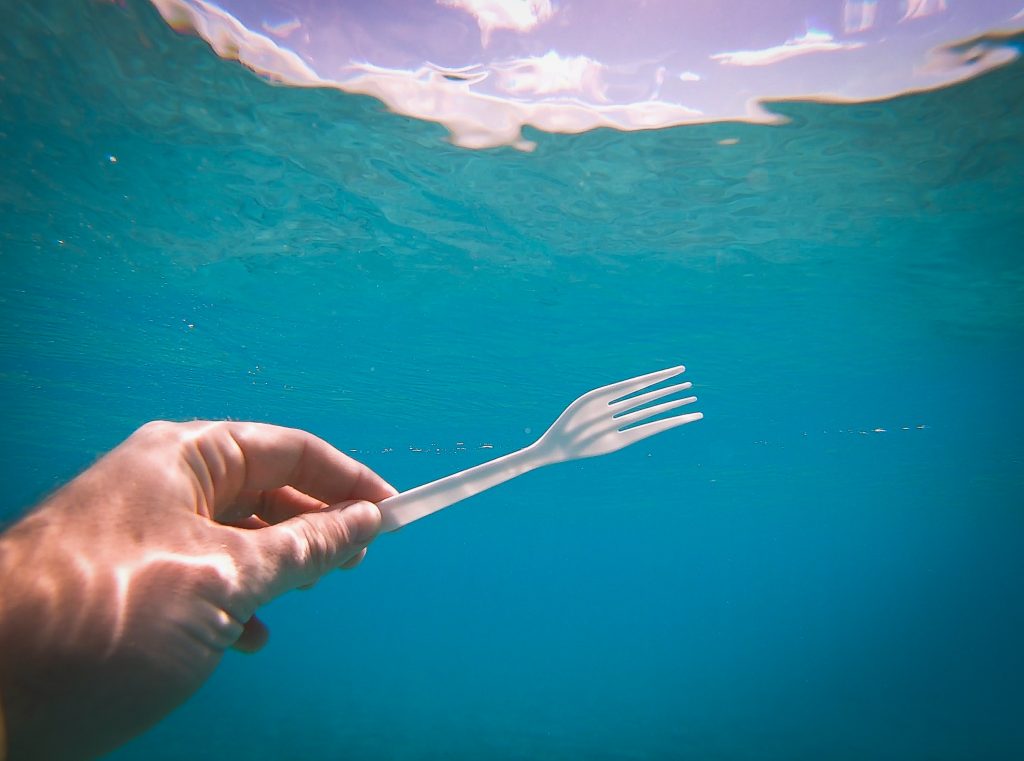All You Need To Know About Microplastics
Plastic is the most prevalent variety of marine debris in our oceans. But microplastics, being less than a few centimetres in diameter, are clogging up ecosystems just as much as larger pieces of plastic, thus resulting in incredibly harmful consequences for the environment. But what are microplastics and how can we stop using them?
What are microplastics?
Microplastics are tiny particles of plastic that are generally smaller than 5mm in diameter. They can also come from a variety of sources, including microbeads, which can be found in body exfoliants, cleansers and toothpaste. These small plastic particles can also come from larger pieces of plastic. However, plastics of all sizes will take an average of 450 years to decompose.
Microplastics are currently classified into two groups – primary and secondary:
Primary microplastics
These are pieces of plastic that are already 5mm (or less) in size before they enter the environment. Plastic pellets, microbeads and clothing fibres are examples of primary microplastics.
Secondary microplastics
These are plastic fragments that have been created as a result of degradation, whereby larger bits of plastic gradually break down, releasing tiny microplastics into the environment.
Where do microplastics come from?
Many microplastics derive from degradation. This is a chemical process that relies on the breaking down of polymers. This is because the integrity of plastic is dependent on their molecular weight, the degradation process eventually weakens the material, resulting in plastic which has been significantly degraded.
Once this happens, the product becomes extremely fragile, therefore being considerably easy to break into many tiny pieces. Often, the fragments that derive from this process will not be visible to the human eye, but they still go through a further degradation. This is because the carbon in the polymer is being modified into carbon dioxide, which is often unintentionally incorporated into marine biomass.
Sources of microplastics:
- Sewage treatment plants
- Cosmetics
- Vehicle tyres
- Clothes
- Manufacturing
- Fishing industry
- Water bottles
- Packaging and shipping
Why are microplastics harmful?
Due to microplastics being incredibly small, they’re often found to enter a variety of natural ecosystems. According to a recent scientific review published by the European Union’s Scientific Advice Mechanism (EUSAM), microplastics are now present in every single part of the environment. Widely recognised problems include:
- Threat to marine life
- Animals can ingest, entangle or suffocate on microplastics, leading to death or debilitating injury.
- Threat to freshwater systems
- Samples collected from 29 Great lakes across the USA were found to contain plastic fragments.
- 98% of these were microplastics in varying sizes, from 0.355mm to 4.75mm.
- Contamination of human food
- In 2007, fish accounted for 6.1% of all protein consumed. When fish and crustaceans ingest plastic, it can subsequently end up being consumed by humans too.
- In New York, a study was carried out in which 18 fish species were sampled and tested for the presence of microplastics. It was found that all samples showed some level of plastic in their system.
- Transfer of persistent organic pollutants (POPs)
- Microplastics can carry organic, synthetic compounds (POPs) from the environment to different organisms.
How can we reduce the use of microplastics?
There are many ways in which we can limit the amount of microplastics that enter the environment:
- Stop buying bottled water – instead buy a water filter.
- Buy eco-friendly, non-synthetic garments – ocean-friendly swimwear now exists, along with all cotton bedding which promises to produce zero-waste.
- Buy a laundry ball – these catch the microplastics that come from your clothes while they’re in the washing machine. This prevents any plastic from entering the water system.
- Don’t use the tumble dryer – instead, air dry your laundry.
- Use public transport – microplastics can come from the wear of your car tyres. The less cars on the road means that fewer microplastics are being produced.
- Reduce meat and fish consumption – this limits how much plastic you’re unknowingly consuming.
Did you know?
- It takes approximately 450 years for a piece of plastic to decompose.
- 80% of the plastic in the ocean originates on land.
- Microplastics are present in almost every water system in the world.
- 93% of bottled water showed some sign of plastic contamination.
- Currently, there are no legal or regulatory limits on the levels of microplastics in bottled water.
- One million tonnes of plastic fibre are released into wastewater every year.
- 10% of the ocean’s microplastic pollution derives from paint that becomes dust, which goes on to coat the ocean’s surface.
- Plastic dust can also come from the friction between car tyres and the road. Subsequently, the wind blows this dust into the waterways.
- Car tyres shed 20g of plastic dust for every 100km a car travels.
- Microplastics can contaminate the food chain, including fish products that are eaten by humans.
- Synthetic clothes, such as fleece, can shed microplastics into the water during the washing process.
- Household dust is a major source of microplastic.
- 114 pieces of microplastic land on a dinner plate during a 20 minute duration, adding up to between 13,000 and 68,000 pieces every year.
- Every time you breathe in, you could be inhaling microplastic.
Woodford Recycling are proud to offer a variety of waste management services, including skip hire. We’re dedicated to recycling over 85% of the waste we collect, with an aim to send zero waste to landfill. We’ve recently acquired a state-of-the-art recycling facility which reliably and intelligently retrieves and recycles waste. For more information about our extensive range of services, get in touch with us today – we operate throughout Cambridge, Peterborough, Huntingdon, Stamford, St Ives and more.


